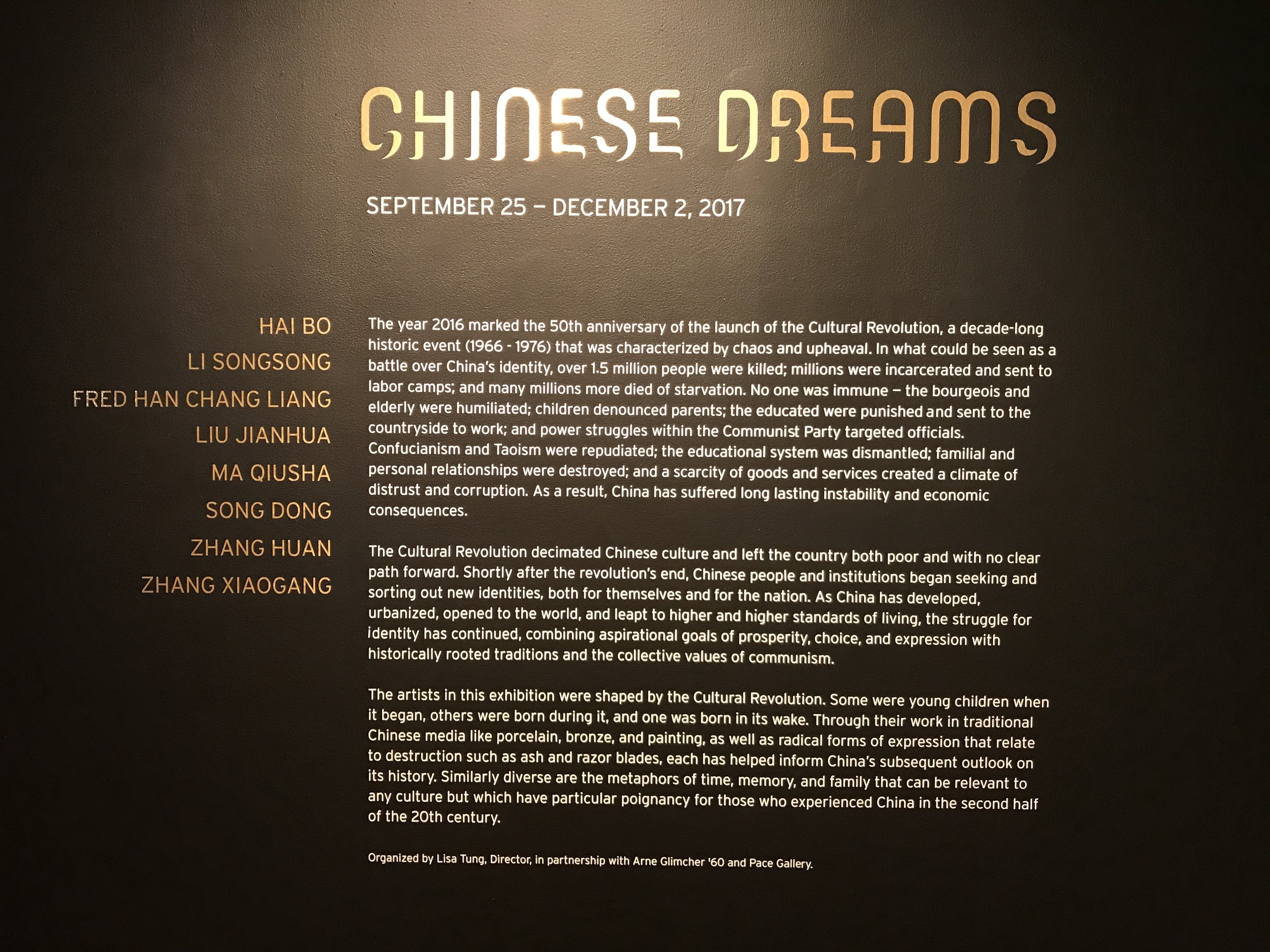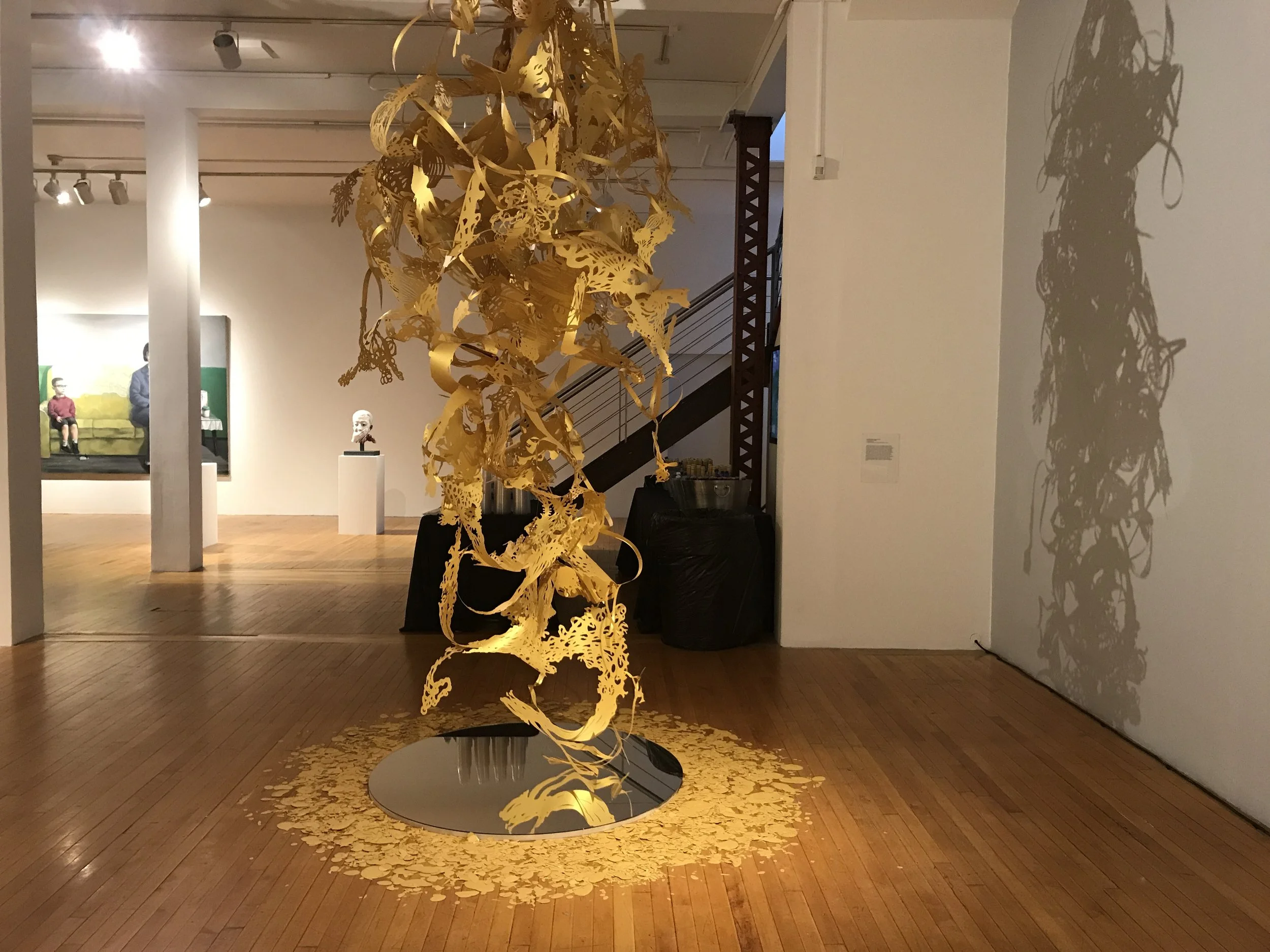
Autumn Biophony, 2017
Cut paper, mirror
Courtesy of the artist and Carroll and Sons, Boston
Fred Han Chang Liang's work in printmaking, paper cutting (ianzhi), and ceramic sculpture is inspired by his interests in Eastern philosophies, science, and cultural histories. Viewing art as a way of achieving poetic self-realization, his works often incorporate diverse elements of his old and new homelands, from Buddhist teachings and Taoist poetry to the writings of Ralph Waldo Emerson. Growing up in China during the Cultural Revolution, when traditional culture, religious study, and individual expression were repressed, he rediscovered many cultural references as an adult. These ideas merge in his Biophony series, whose title refers to the collective soun made by living organisms. Liang's "drawings in space" form a harmonious amalgamation of diverse concepts, turning a traditional method of paper cutting into a graceful sculptural form.
CHINESE DREAMS
SEPTEMBER 25 - DECEMBER 2, 2017
The year 2016 marked the 50th anniversary of the launch of the Cultural Revolution, a decade-long historic event (1966 - 1976) that was characterized by chaos and upheaval. In what could be seen as a battle over China's identity, over 1.5 million people were killed; millions were incarcerated and sent to labor camps; and many millions more died of starvation. No one was immune - the bourgeois and elderly were humiliated; children denounced parents; the educated were punished and sent to the countryside to work; and power struggles within the Communist Party targeted officials.
Confucianism and Taoism were repudiated; the educational system was dismantled; familial and personal relationships were destroyed; and a scarcity of goods and services created a climate of distrust and corruption. As a result, China has suffered long lasting instability and economic consequences.
The Cultural Revolution decimated Chinese culture and left the country both poor and with no clear path forward. Shortly after the revolution's end, Chinese people and institutions began seeking and sorting out new identities, both for themselves and for the nation. As China has developed, urbanized, opened to the world, and leapt to higher and higher standards of living, the struggle for identity has continued, combining aspirational goals of prosperity, choice, and expression with historically rooted traditions and the collective values of communism.
The artists in this exhibition were shaped by the Cultural Revolution. Some were young children when it began, others were born during it, and one was born in its wake. Through their work in traditional Chinese media like porcelain, bronze, and painting, as well as radical forms of expression that relate to destruction such as ash and razor blades, each has helped inform China's subsequent outlook on its history. Similarly diverse are the metaphors of time, memory, and family that can be relevant to any culture but which have particular poignancy for those who experienced China in the second half of the 20th century.
Organized by Lisa Tung, Director, in partnership with Arne Glimcher '60 and Pace Gallery.






